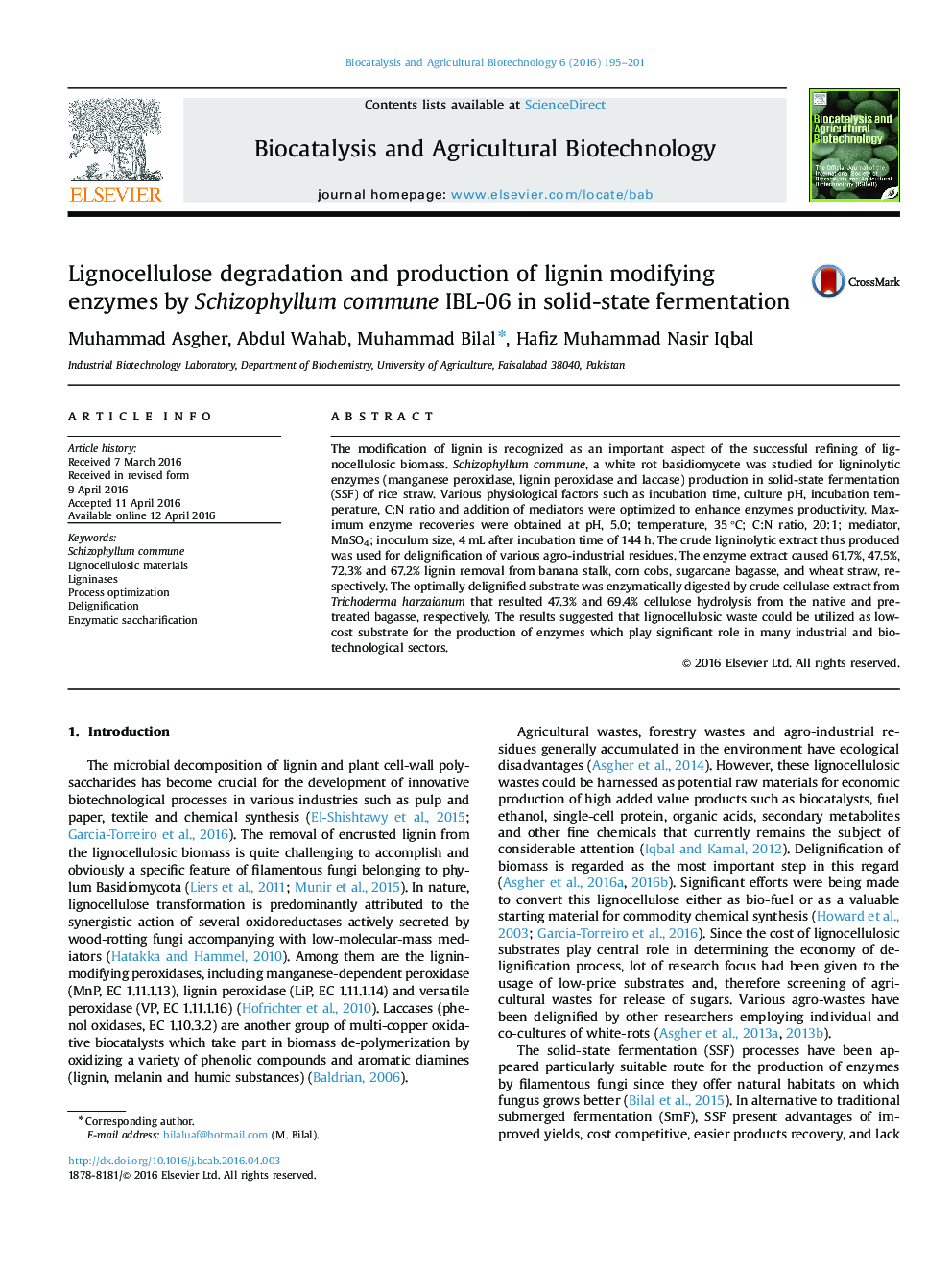| Article ID | Journal | Published Year | Pages | File Type |
|---|---|---|---|---|
| 2075393 | Biocatalysis and Agricultural Biotechnology | 2016 | 7 Pages |
The modification of lignin is recognized as an important aspect of the successful refining of lignocellulosic biomass. Schizophyllum commune, a white rot basidiomycete was studied for ligninolytic enzymes (manganese peroxidase, lignin peroxidase and laccase) production in solid-state fermentation (SSF) of rice straw. Various physiological factors such as incubation time, culture pH, incubation temperature, C:N ratio and addition of mediators were optimized to enhance enzymes productivity. Maximum enzyme recoveries were obtained at pH, 5.0; temperature, 35 °C; C:N ratio, 20:1; mediator, MnSO4; inoculum size, 4 mL after incubation time of 144 h. The crude ligninolytic extract thus produced was used for delignification of various agro-industrial residues. The enzyme extract caused 61.7%, 47.5%, 72.3% and 67.2% lignin removal from banana stalk, corn cobs, sugarcane bagasse, and wheat straw, respectively. The optimally delignified substrate was enzymatically digested by crude cellulase extract from Trichoderma harzaianum that resulted 47.3% and 69.4% cellulose hydrolysis from the native and pre-treated bagasse, respectively. The results suggested that lignocellulosic waste could be utilized as low-cost substrate for the production of enzymes which play significant role in many industrial and biotechnological sectors.
